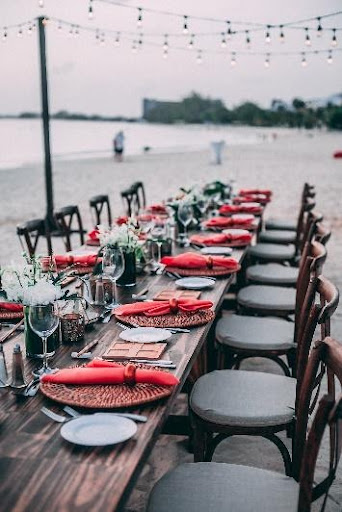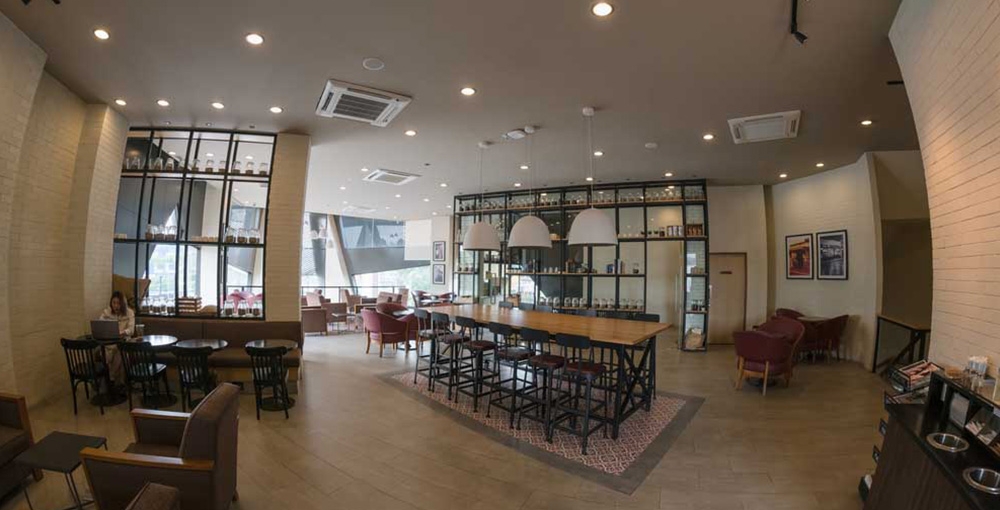There’s something warm and inviting about stepping into an eatery and seeing communal tables bathed in the warm glow of gentle light and filled with friendly customers enjoying their meal alongside friends they came with…and those they just met.
But is communal dining as popular as it once was? We’re going to provide you with some of the pros and cons of communal dining in your restaurant and let you decide if this unique dining arrangement is right for you and your customers.
What is communal dining?
The concept of communal dining centers around bringing people together over a great meal. Sharing a table with people doesn’t encourage the breaking down of barriers and the building of relationships.
Communal tables allow restauranters to seat multiple parties at the same table and, while the idea has gained popularity over the last 10 years, the concept is nothing new. Restaurants that allow parties to sit at a lone table didn’t exist until the idea was implemented in 1760’s Paris. Until then, it was common practice for guests at inns and pubs to dine communally. Enjoying a meal at a private table was a luxury reserved for the wealthiest patrons.
Reasons to Embrace Communal Dining
1. It Maximises Your Space
If you’re looking to get as many customers as possible into your restaurant at any given time, communal dining is the way to go.
Using communal seating, you’ll be able to comfortably seat 100 guests in as little as 93 square metres. Using traditional round tables, you’d need over 111 square metres of space to seat the same number of people.
2. It’s Unquestionably Trendy
Communal tables are an easy way to modernise the ambiance of your eating area while creating a friendly and laid-back atmosphere. People today are looking for more of a social experience when eating, and having the opportunity to make new friends over a delicious meal certainly caters to that. Even fine-dining eateries are embracing the trend of seating different parties at the same table.
3. It Can Provide a Social Media Moment

Let’s face it—there’s a whole group of diners who choose their restaurant by how Instagram-worthy their photos of the space will be. And there’s something unquestionably cool and classy about capturing the length of a well-dressed table with family and friends gathered about.
No need to worry about anyone having their back turned toward a camera when you’re gathered around a long table. Everyone is sure to look social media ready.
4. They’re More Profitable
One of the biggest arguments for having communal tables is this—they can make you more money. No longer do you run the risk of large parties leaving as they wait for multiple small tables to come available so they can be pushed together. Long tables allow you to quickly seat large parties and to easily mix and match smaller parties to create a full table. This reduces wait time and increases turnover…which means more guests coming through your establishment spending more money.
5. They Save Time
Communal dining tables are easier to set and decorate when compared to smaller round or square tables. If yours is an eatery that uses tablecloths, you’ll enjoy having fewer clothes for your long tables. They are also faster to decorate and easier to serve guests from, freeing up more time for your staff to take care of other tasks.
Reasons to Reject Communal Dining
1. We’re Climbing Out of a Global Pandemic
There’s no two ways around it—the COVID-19 pandemic has changed much about the restaurant industry. People are still cautioned against spending extended periods of time indoors around people they don’t know, so the idea of sitting at a table with strangers may be concerning to some clients.
2. It Can Make Single Diners Feel Awkward
Seating a solo diner at a table with a couple of larger parties can be awkward for everyone. You may want to consider having a few two tops for the occasional lone diner.
3. It Can Be Hard to Have a Conversation
Communal dining establishments are rarely quiet. If you are seated with a large party, you’ll be hard pressed to hold a conversation with those who are seated 2-3 people away from you. Round tables are much more conducive to easy conversation in this case.
4. Not Everyone is Fun to Be Around When Dining
There are some instances when the communal dining experience can be less than pleasant—if you’re seated next to someone carrying on a loud phone or FaceTime conversation, or if you wind up next to a raucous bunch using questionable language while you try to enjoy a meal with your young children in tow.
The decision to embrace or reject the communal dining concept will largely depend on your establishment and clientele. We hope these points help you determine whether communal dining is right for your establishment.
Thanks for reading,
Have a Seat
1300 715 937

